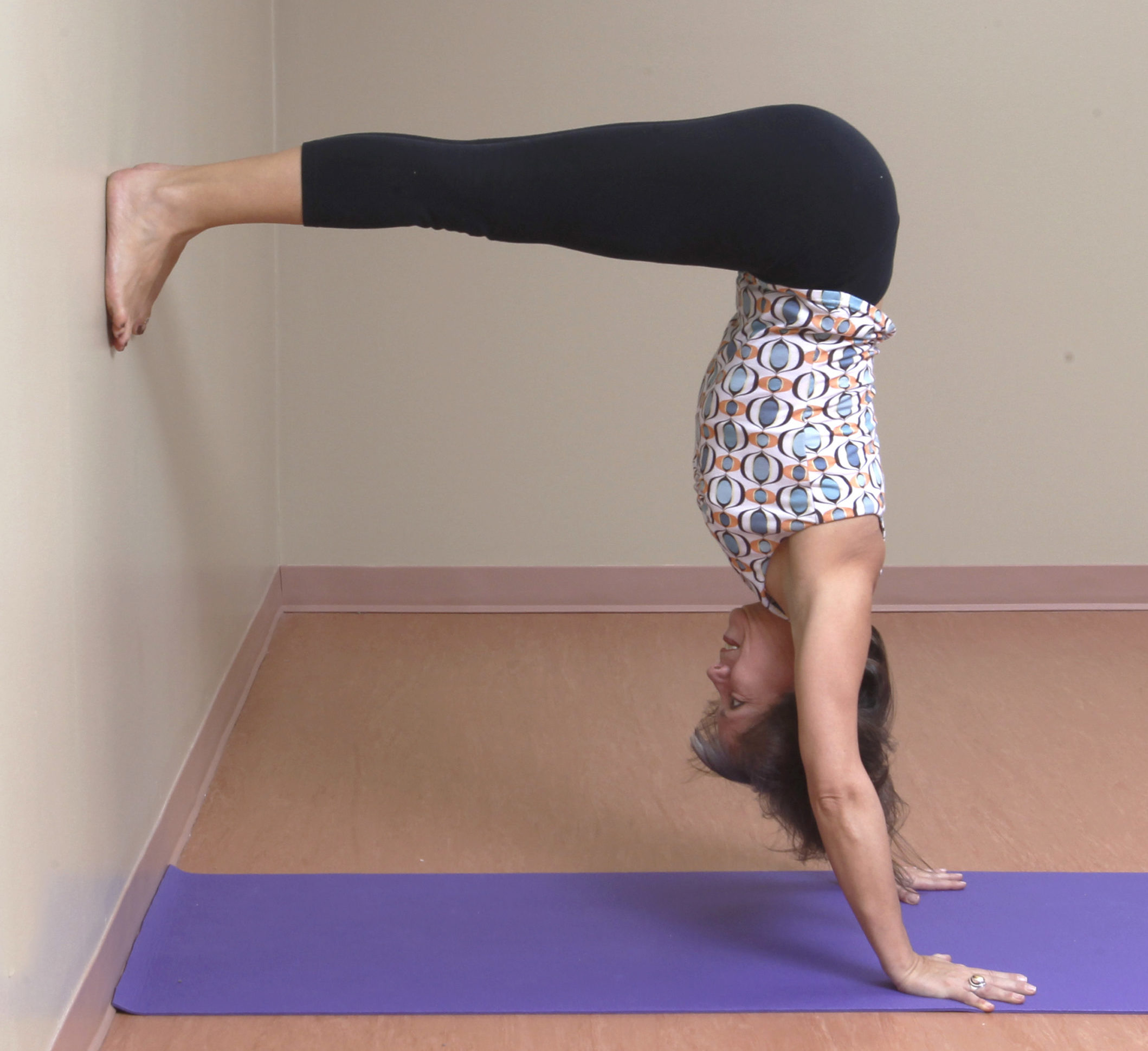Peace is all around us – in the world and in nature – and within us – in our bodies and in our spirits. Once we learn to touch this peace, we will be healed and transformed. It is not a matter of faith; it is a matter of practice. Thich Nhat Hanh
Arguably, inner peace could be viewed as the opposite of anxiety and depression. Fortunately, turning our bodies upside down in yoga inversions brings us to a state of peacefulness. In these postures, we feel good due to the increased blood flow to the brain, heart and lungs. Remember, where the blood flows, energy and oxygen follow, which improves your mental clarity, strength and fortitude.
Nothing improves your mental health better than the ability to confront your fear. I say this because the most common feeling confronted in inversions like handstand, shoulder stand and headstand is fear. By continually leaning into our fear, we regain our ability to trust ourselves and life.
Although it may take weeks, months or even years before you successfully stand on your two hands, the pathway there is warding off depression and anxiety. When the day arrives where you master the pose, the exhilaration and contentment feed into and expand your inner peace.
So, learn how to heal yourself from the inside-out by practising the inversion sequence below. You might want to begin the practice by sitting quietly in Virasana for 3 to 5 minutes while you engage the suggested yoga actions. Then, take these yoga actions into each subsequent posture.
YOGA ACTIONS:
1. Activate Ujjayi Breathing and maintain this gentle pranayama breath throughout the illustrated practice below.
2. Once you establish Ujjayi breathing, draw 3 INHALED breaths into the space between the upper inner edges of the shoulder blades in the back body. Notice the impacts.
3. Maintain the space created in the upper back, and draw each following INHALED breath into the lower floating ribs in the back body (at the bottom of the rib cage). Again, notice the impacts.
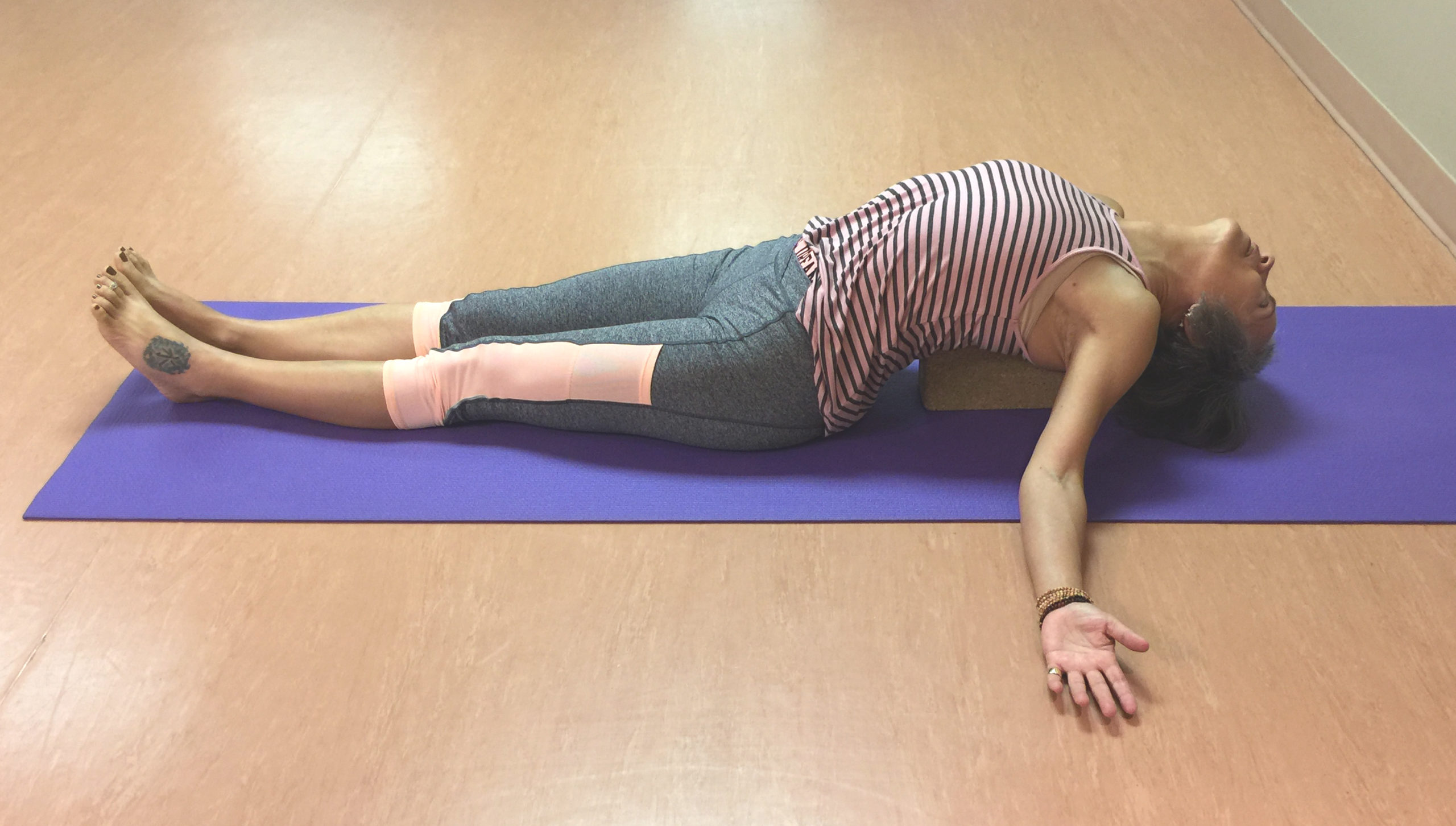
SALAMBA MATSYASANA (Supported Fish) 20 Breaths each (Bs ea)
1) begin with medium-height block behind head
2) then, low block
3) no block; crown rests into floor or head hangs if comfortable
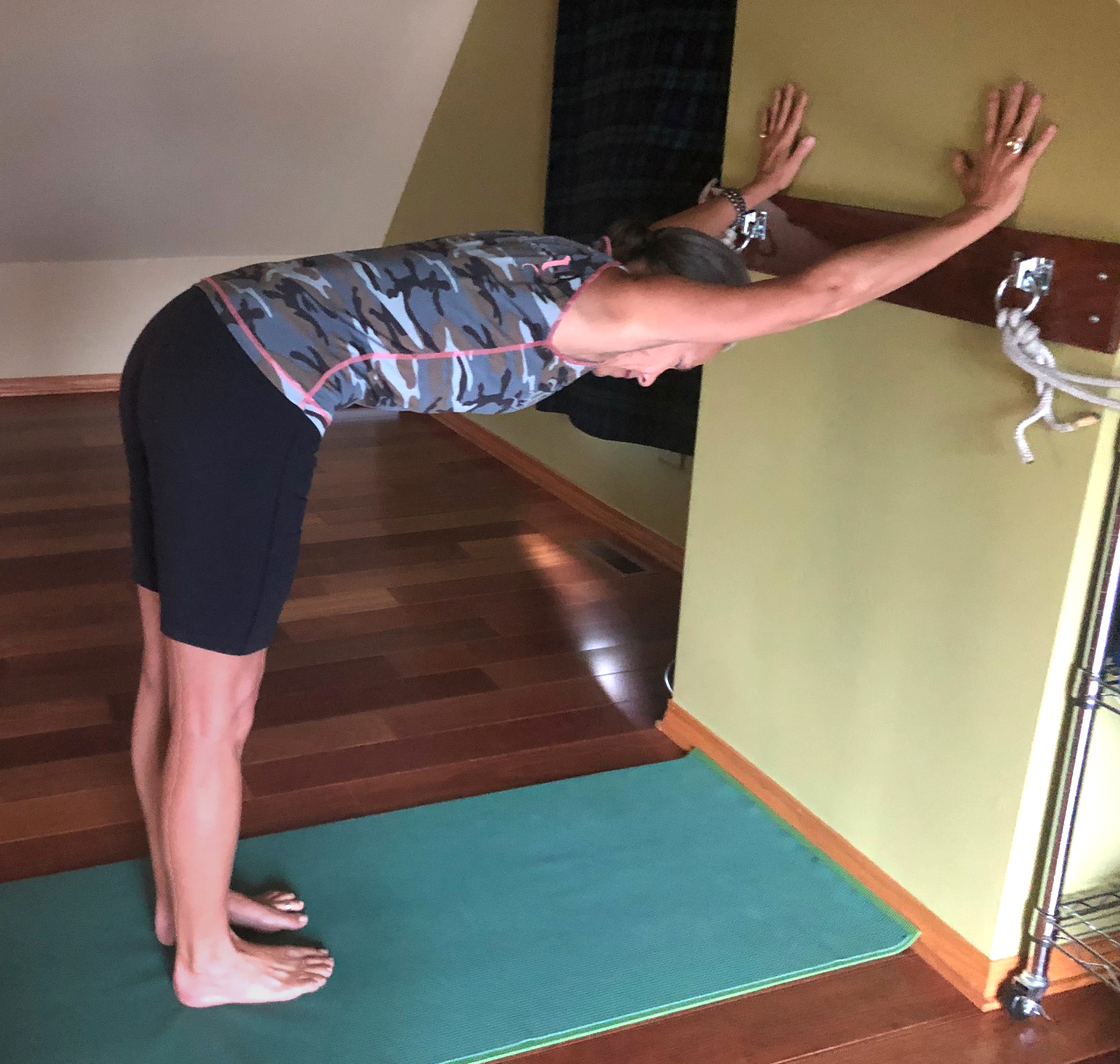
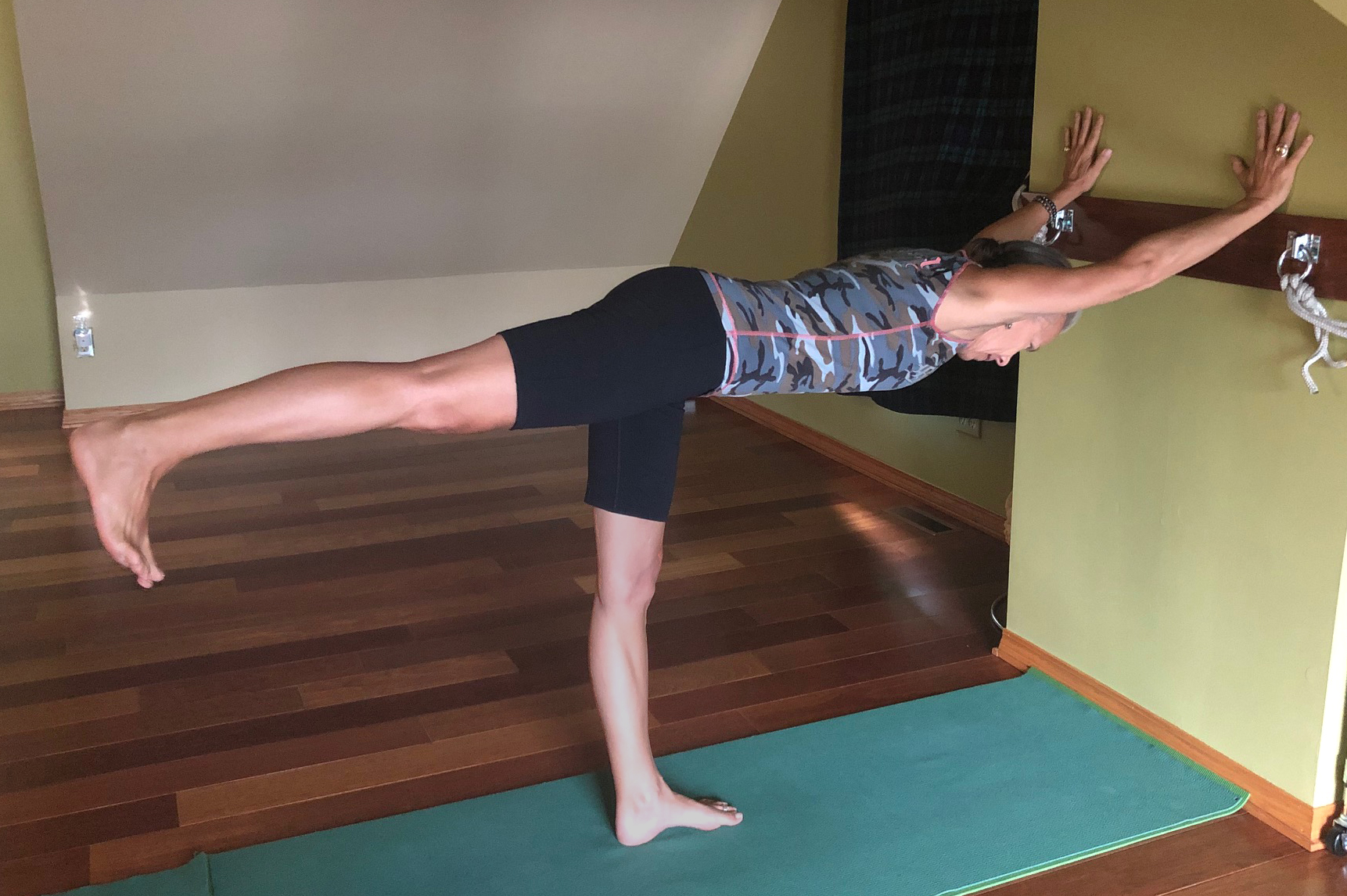
WALL STRETCH to EKA PADA (One-legged) WALL STRETCH 10 Bs ea
– repeat both poses on other leg; resting when you need
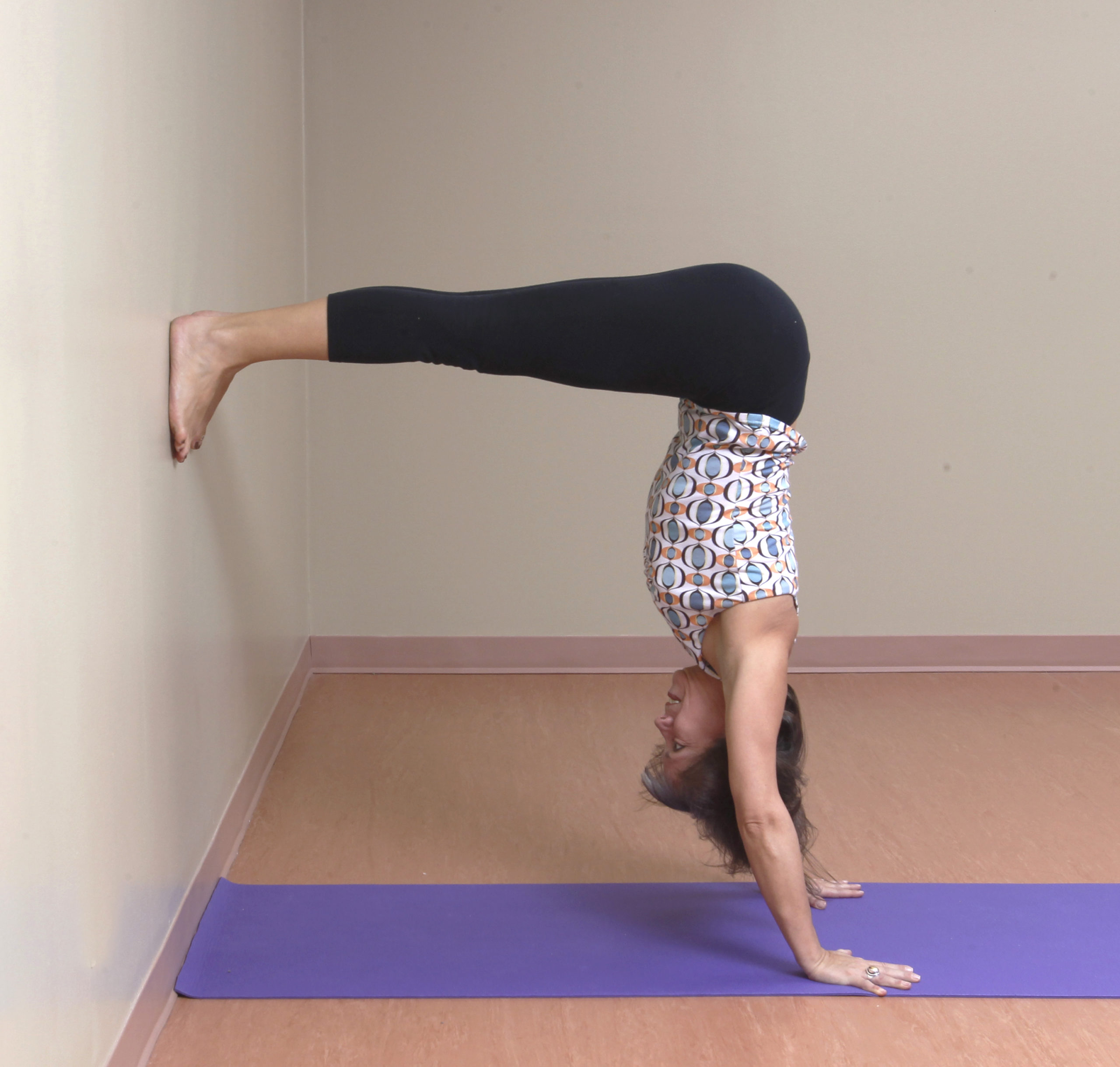

ARDHA ADHO MUKHA VRKSASANA to EKA PADA ARDHA AMV 5 Bs ea
(Half Handstand to Half One-legged Handstand)
– start by sitting in Dandasana with sacrum into wall. Use belt to mark where heels are, and place hands in front of belt line. Take feet to wall in 90 degree angle.
– rest in Balasana between poses. Do other leg raise.
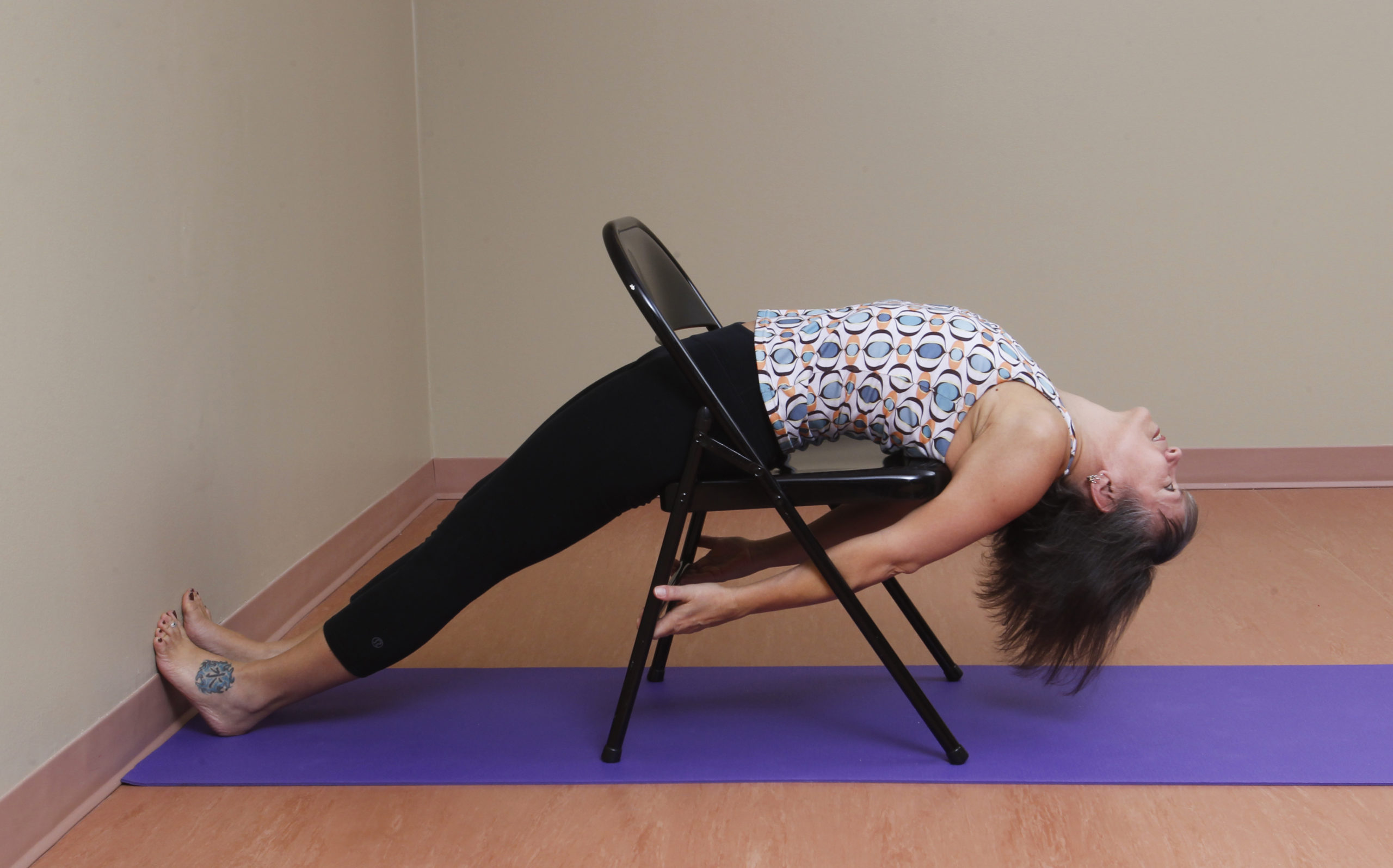
CHAIR PURVOTTANASANA (Intense Front-Body Stretch) 20 – 30 Bs
– place Hi block under head if neck is distressed
– hands clasp back chair rung
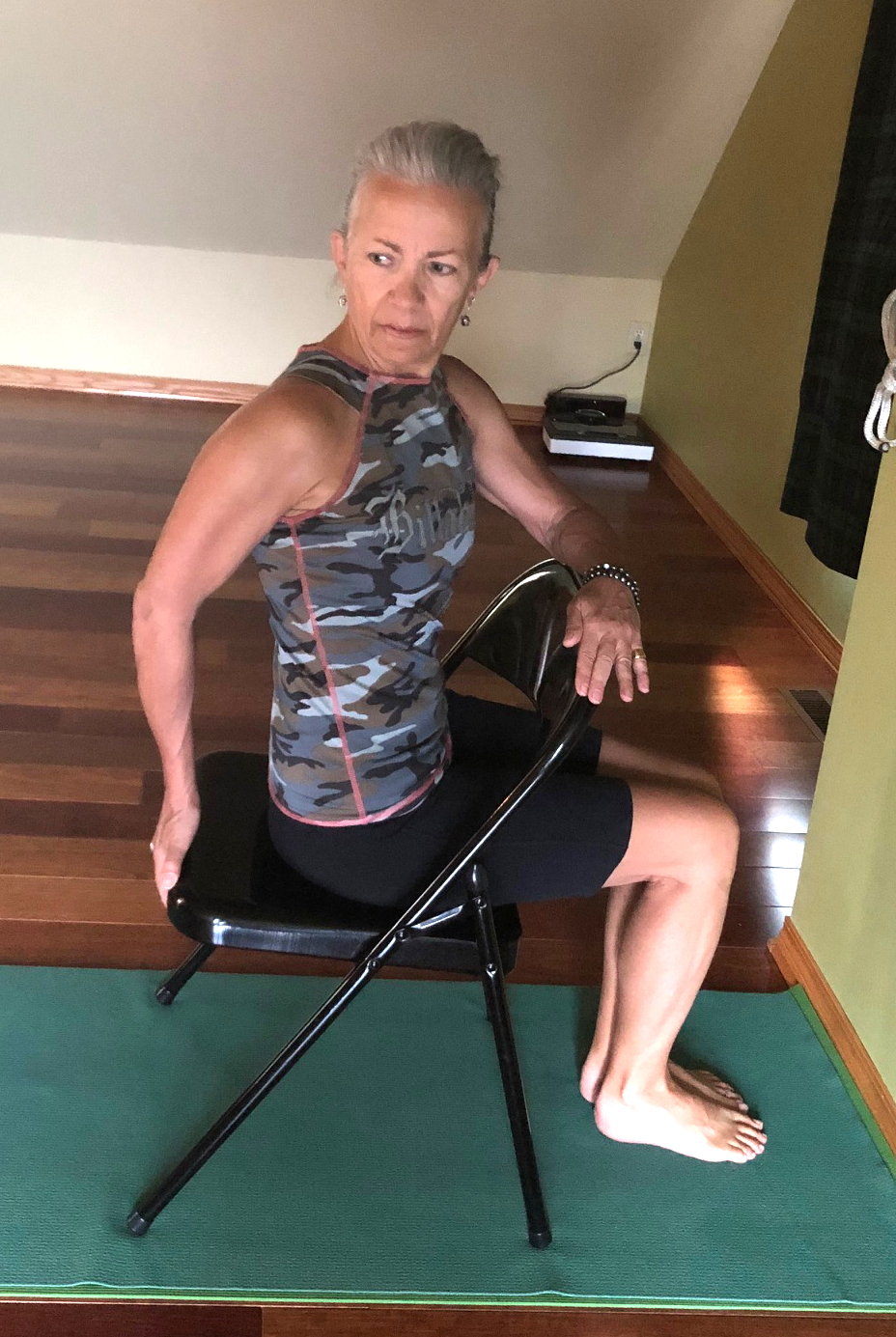
CHAIR BHARAVAJASANA (Rib-cage Twist) 5 – 10 Bs ea
– pelvis and legs remain grounded; only rib cage twists
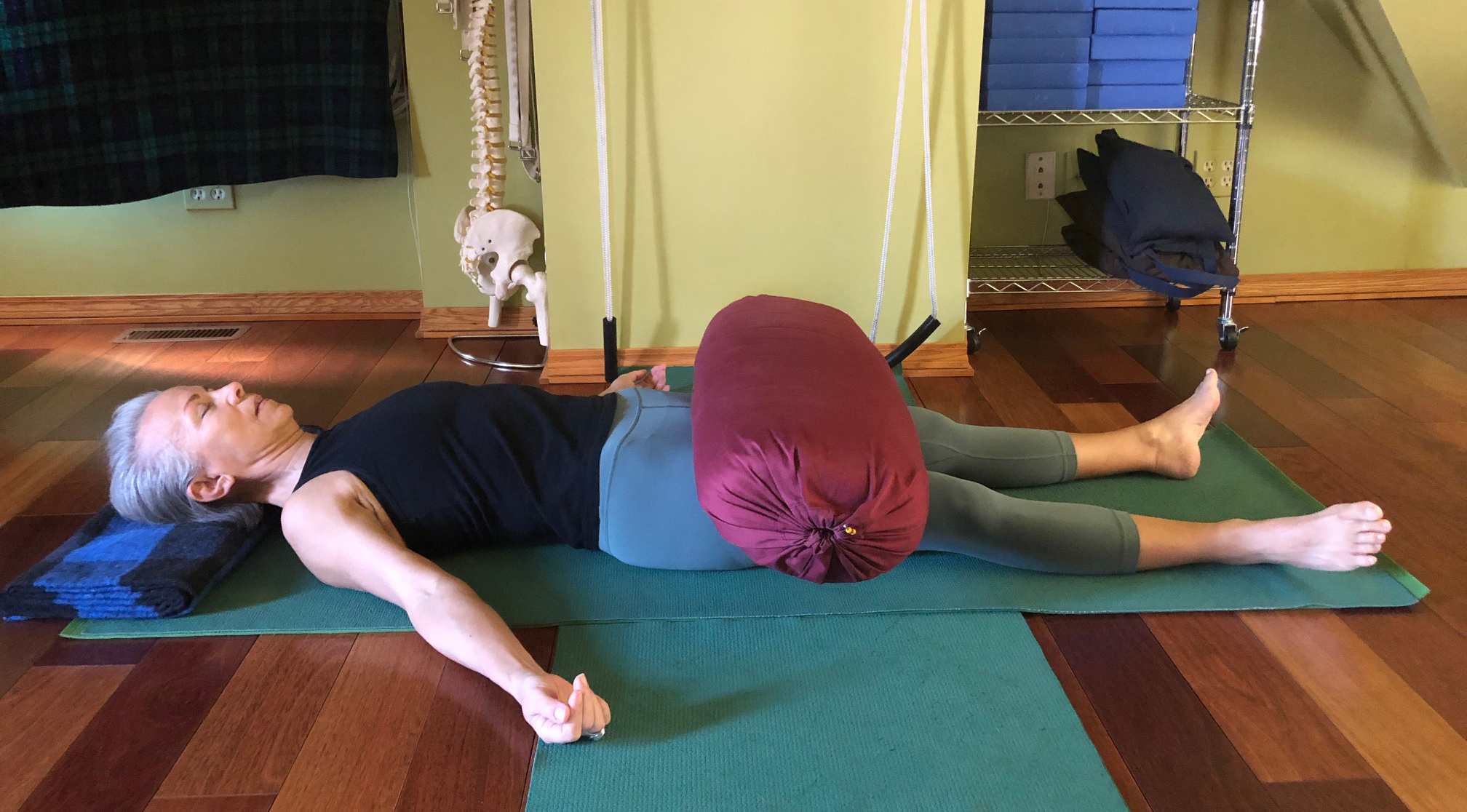
SAVASANA (Corpse) 5 – 10 minutes
– place bolster or weight across upper thighs to ground femurs
May inner peace guide our thoughts, word and deeds. Namaste.

